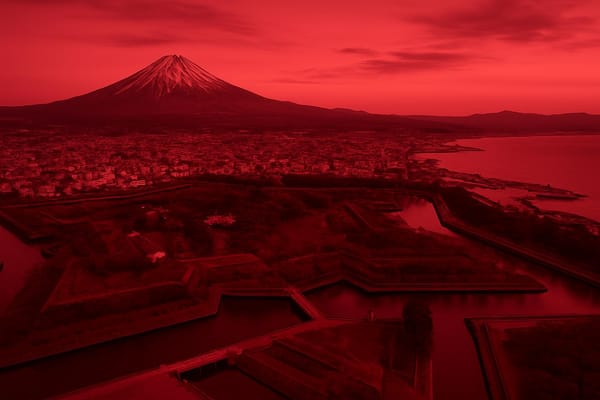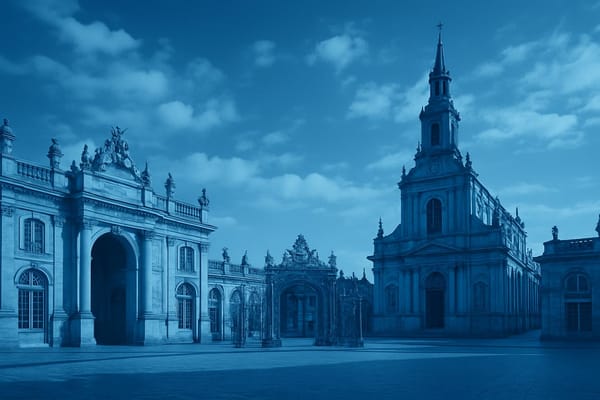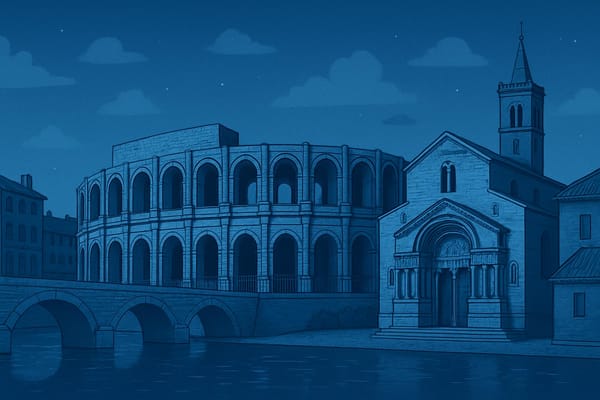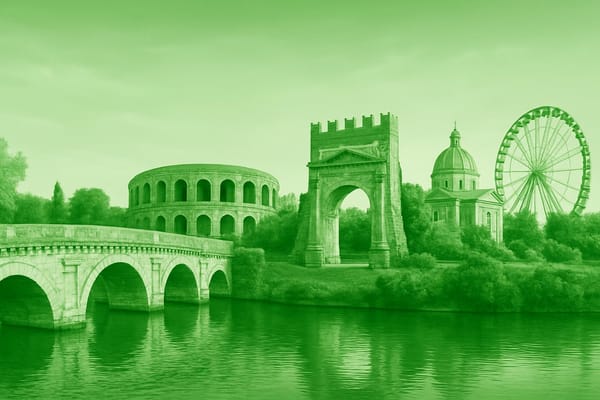Nikko
UNESCO-listed shrines, temples, waterfalls & hot springs - vivid autumn foliage and mountain hikes.
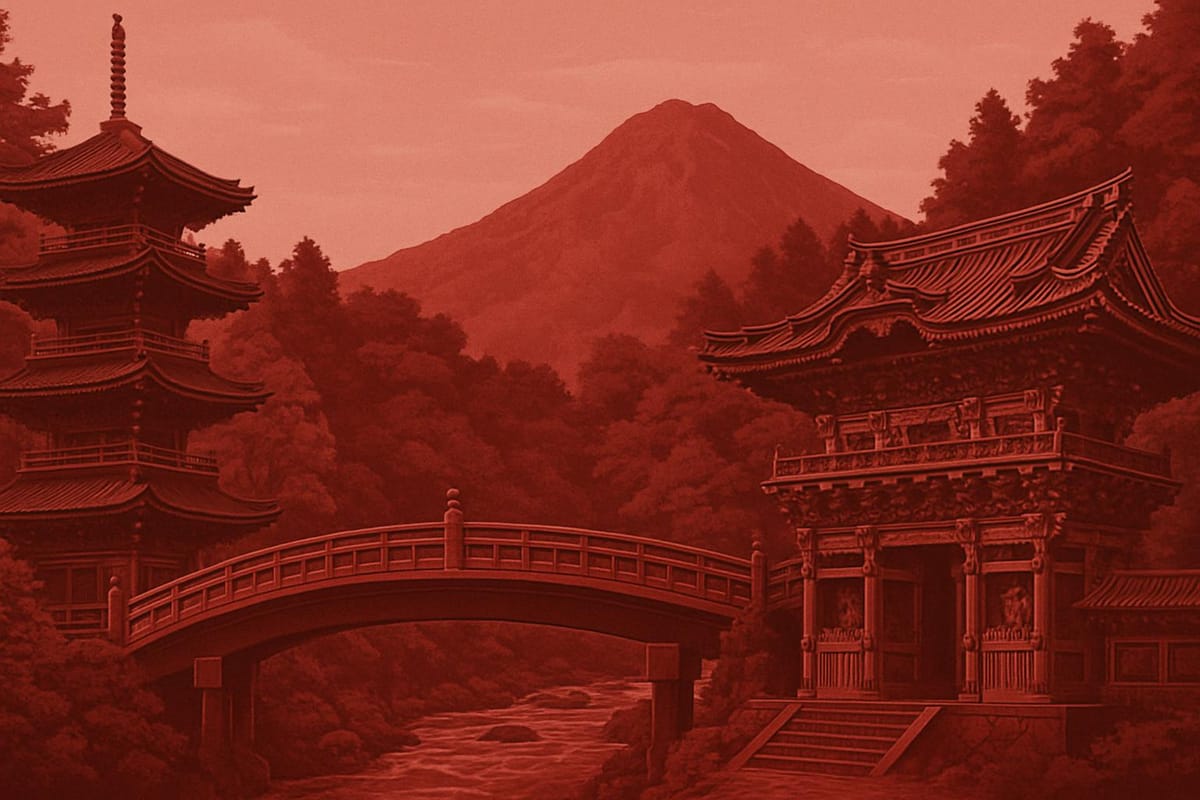
Important things to know about Nikko
Nikko, Japan sits quietly in Tochigi Prefecture as a compact mountain town where crisp air and dense forests shape daily life, and the rhythm of the seasons guides both work and leisure; residents move between modest wooden homes, narrow streets, and small markets that showcase local cuisine and artisanal goods, while cafes and family-run restaurants serve regional flavors rooted in the area’s agricultural bounty. The city’s identity is steeped in tradition, reflected in careful craftsmanship, time-honored festivals, and community rituals that persist alongside modern conveniences, and a walk through its neighborhoods reveals layers of history in everyday details like carved eaves, lacquered storefronts, and the steady presence of local workshops. Accessibility by rail and road keeps Nikko connected to Tokyo and the wider Kanto region, allowing a flow of visitors without diluting the town’s intimate pace, and its economy blends tourism services with small-scale manufacturing, hospitality, and seasonal agriculture; the climate brings vivid seasonal colors in autumn, quiet snow in winter, and a verdant renewal in spring, all of which influence clothing, cuisine, and outdoor pastimes for locals. Community life emphasizes preservation and stewardship-citizens balancing modern needs with conservation of forests and waterways-while boutique shops, small galleries, and regional food producers contribute to a civic character that feels both proudly local and quietly cosmopolitan, making Nikko a distinctive example of Japan’s small-city cultural landscape.
Sightseeing hot-spots in Nikko
Nikko is a compact treasure of cultural and natural wonders that draws visitors from Tokyo and beyond to explore its UNESCO World Heritage shrines and temples. The ornate Tōshō-gū complex, with its lacquered carvings, gilt rooflines and the famous Yomeimon gate, is a highlight for anyone interested in Japanese craftsmanship and history. Walking the cedar-lined approach to the shrine evokes a solemn, almost sacred atmosphere, and the nearby Rinno-ji and Futarasan temples offer a serene counterpoint where Buddhist and Shinto traditions mingle. Sightseeing in Nikko often focuses on these historic sites, where intricate woodwork and colorful paintings reward close inspection and photography.
Beyond the temples, Nikko’s natural scenery is equally compelling and accessible, making it a top choice for things to do in Nikko year-round. The dramatic Kegon Falls tumbles from Lake Chūzenji in a thunderous display that is especially striking in autumn when the surrounding maples blaze red and gold. Lake Chūzenji itself sits at elevation and provides peaceful boat rides, lakeside walks and panoramic viewpoints across Nikkō National Park. Hiking trails thread through misty cedar forests and open ridgelines, while seasonal attractions like spring blossoms, summer greenery and winter snows lend Nikko a different personality with each visit.
Practical sightseeing in Nikko is straightforward, with convenient access from Tokyo by train or bus that makes it possible to enjoy a day trip or a relaxed overnight stay. Local ryokan and onsens add cultural comfort after a day exploring, and festivals such as the vibrant processions at Tōshō-gū provide memorable immersion in regional traditions. Whether you’re seeking history, nature or a blend of both, Nikko’s compact mix of heritage sites, waterfalls and mountain lakes creates an unforgettable itinerary that rewards both casual visitors and dedicated photographers.
Hotels to enjoy in Nikko
Nikko is a destination where hotels in Nikko, Japan blend history and hospitality, offering stays that range from charming traditional ryokan with tatami rooms and private onsen baths to modern luxury hotels close to JR Nikko Station. Many Nikko hotels are strategically placed for visitors planning to explore the UNESCO World Heritage shrines and temples, including the ornate Toshogu Shrine, as well as natural attractions such as Lake Chuzenji and Kegon Falls. Whether you seek peaceful mountain views, easy access to hiking trails in Nikko National Park, or convenient proximity to the station and local restaurants, accommodation in Nikko caters to families, solo travelers, and couples looking for romantic getaways. Emphasizing local cuisine and seasonal experiences, several properties serve kaiseki meals featuring regional ingredients and offer English-speaking staff to assist international travelers navigating sightseeing and transportation.
When choosing among Nikko hotels, consider the purpose of your visit: cultural touring, nature-based excursions, or a restorative onsen retreat, and book early for peak seasons such as autumn foliage and Golden Week to secure the best rooms and rates. Budget hotels and guesthouses provide affordable, clean options for backpackers and short stays, while boutique heritage inns and upscale resorts deliver refined service and scenic panoramas for special occasions. To make the most of your trip, compare amenities like free breakfast, shuttle services to major attractions, and in-house dining that highlights Yamato cuisine and local sweets. With this range of accommodations, Nikko continues to be a compelling choice for travelers seeking both convenience and authenticity in Japan.
Restaurants to try in Nikko
Nikko’s dining scene blends centuries-old tradition with a lively contemporary spirit, making restaurants in Nikko a must-visit for food lovers. Nestled near the ornate shrines and cedar-lined paths of Toshogu, many eateries serve the town’s signature ingredient, yuba (tofu skin), in everything from delicate soups to hearty set meals. Alongside yuba, visitors will find excellent soba houses, seasonal kaiseki tasting menus, and casual spots serving ramen and tempura that reflect Tochigi’s rich agricultural produce. Whether you search for the best restaurants in Nikko for a special occasion or a quick, satisfying lunch after exploring Nikko National Park, the variety caters to both traditional palates and modern tastes, with menus that highlight local mushrooms, river fish, and mountain vegetables.
Walking from Nikko Station toward the temple district, it’s easy to discover a mix of refined ryotei, friendly izakaya, and family-run cafes that prioritize local ingredients and scenic views. Many Nikko restaurants offer seasonal specialties that change with the cherry blossoms or autumn foliage, so timing your visit can enhance the culinary experience. For travelers seeking authentic Nikko food beyond touristy options, ask for places frequented by locals or book ahead for popular kaiseki dinners. Vegetarian and gluten-conscious choices are increasingly available, and the welcoming atmosphere in small dining rooms makes sampling multiple spots a pleasure. Exploring the diverse Nikko restaurants will reveal why this historic town is as celebrated for its food as it is for its heritage.
Best shopping stops in Nikko
Nikko shopping offers a delightful mix of traditional crafts and modern souvenirs, making it a must-visit destination for travelers seeking authentic Nikko souvenirs. Strolling from the area around Toshogu Shrine toward the Shinkyo Bridge you’ll find narrow streets lined with quaint shops selling everything from delicate yuba (tofu skin) delicacies and regional sweets to handcrafted wooden goods and lacquerware. Local specialty stores showcase seasonal produce and artisanal snacks ideal for omiyage, while boutique galleries display contemporary takes on centuries-old techniques. Visitors who search for “Nikko shopping” online often highlight the charming atmosphere of the shopping streets where historic architecture and peaceful forest views complement the retail experience.
Beyond edible treats, Nikko’s shopping highlights include fine handmade ceramics, textiles, and small-batch condiments such as miso and soy sauces made by family-run producers. Artisan workshops frequently allow glimpses into the creative process, and several shops are happy to wrap purchases in traditional Japanese style, perfect for gift-giving. For those focused on local tastes, sampling and buying regional sake and craft snacks provides a tangible memory of Nikko’s rich cultural heritage. Whether you’re hunting for a unique keepsake from Nikko City or looking to bring home gourmet specialties, the area’s compact shopping scene efficiently combines cultural depth with visitor-friendly choices that satisfy both casual browsers and serious collectors.
Nightlife highlights in Nikko
Nikko's nightlife blends serene history with warm, local hospitality, making Nikko, Japan a unique evening destination. After the daytime crowds disperse, seasonal illuminations and softly lit pathways around the Toshogu Shrine and temple grounds create a magical atmosphere for twilight strolls. For food lovers, the town's compact center offers intimate izakaya and restaurants serving regional specialties like yuba (tofu skin) and locally brewed sake, perfect for sampling while discussing the day's temple visits. Many ryokan and small eateries emphasize a relaxed pace, so enjoying a multi-course kaiseki dinner or a tasting of craft beers feels both authentic and unhurried.
Beyond the dining scene, Nikko nightlife extends to soothing evenings at an onsen-equipped ryokan, where hot springs and quiet mountain views provide a tranquil end to the day. Those seeking gentle adventure can head toward Lake Chuzenji for stargazing or seasonal night events, while cozy bars and cocktail lounges in the town center offer a friendly place to meet locals and fellow travelers. Whether you want cultural illumination strolls, a culinary journey through regional flavors, or a restorative soak in hot springs, Nikko after dark offers memorable experiences that highlight the best of Japan's historic and natural charms.
Getting around in Nikko
Nikko, Japan, is well served for visitors considering both airport and train access, with most international travelers arriving via Narita or Haneda airports and then connecting to the city by rail; while there are occasional direct airport buses, the most reliable transportation routes involve traveling into Tokyo and transferring to regional lines, making access straightforward for day trips or longer stays. From central Tokyo, the two main rail options are the private Tobu Railway limited express from Asakusa to Tobu-Nikko, favored for its convenience and direct service, or taking the Shinkansen on the JR Tohoku line to Utsunomiya followed by the JR Nikko Line to Nikko Station, offering faster high-speed segments and easy connections for those coming from Shinjuku or Ueno; both routes typically take around two hours depending on transfers. Travelers will find scenic views approaching the mountainous area, plus widely accepted IC cards for seamless boarding and a variety of passes for tourists that can bundle train fare and bus connections, ensuring that the airport-to-Nikko journey is efficient, comfortable, and well-covered by Japan’s dependable rail network.
Culture must-see's in Nikko
Nikko, Japan, is a treasure trove of cultural heritage where centuries of art, religion, and nature converge. The compact city is best known for the Shrines and Temples of Nikko, a UNESCO World Heritage ensemble that includes the ornate Toshogu Shrine, dedicated to Tokugawa Ieyasu, whose Yomeimon Gate and lavish carvings exemplify Edo-period craftsmanship. Walking through the cedar-lined approach, visitors encounter elaborately painted reliefs, symbolic lion and dragon motifs, and the famous Three Wise Monkeys carving that embodies a blend of Shinto and Buddhist traditions. These sites not only showcase architectural beauty but also tell stories of pilgrimage, ritual, and the historical interplay between religion and governance in Nikko, Japan.
Beyond the monuments, Nikko’s cultural highlights extend to its seasonal festivals, traditional crafts, and communal practices that keep local identity alive. The Shunki Reitaisai (Spring Grand Festival) revives samurai processions and horseback rites, while autumn’s koyo transforms the temple grounds into a cascade of color that draws photographers and spiritual seekers alike. Culinary traditions, ryokan hospitality, and soothing onsen culture provide contexts for social ritual and relaxation after visiting sacred sites within Nikko National Park. Whether you’re studying temple iconography, attending a centuries-old festival, or simply strolling under ancient cedars, Nikko offers an evocative cultural experience that epitomizes the historical depth and natural beauty of Japan.
History of Nikko
Nikkō's history unfolds like a tapestry woven through centuries of religion, politics and natural reverence, rooted in the ancient belief that the surrounding mountains were sacred. From its earliest days, pilgrims climbed to Futarasan Shrine and Rinnō-ji, establishing Nikkō as a center of Shinto and Buddhist practice during the Heian and Kamakura periods. The town's profile rose dramatically in the early 17th century when the Tokugawa shogunate enshrined Tokugawa Ieyasu at Tōshō-gū, commissioning lavish mausolea and masterful carvings that fused spiritual symbolism with exemplary Edo period craftsmanship. Over time the cedar-lined approaches, ornate gates and richly decorated buildings became synonymous with Nikkō’s identity, their aesthetic and symbolic complexity reflecting the fusion of political power and religious devotion. In recognition of its extraordinary cultural assets, the Shrines and Temples of Nikkō were inscribed as a UNESCO World Heritage Site in 1999, cementing the town’s reputation as a historic treasure in Japan and prompting renewed conservation efforts to preserve its lacquer work, murals and centuries-old architecture.
As the centuries passed, Nikkō evolved from a sacred pilgrimage site into a celebrated destination for culture and tourism, prized for both its historic monuments and spectacular natural scenery within Nikkō National Park. Visitors come to see the famed Kegon Falls, serene Lake Chūzenji, and to walk the same stone paths once trod by daimyo and monks, especially during the autumn leaf season when the valley glows in red and gold. Local festivals, such as the spring and autumn processions that reenact historical rites, reconnect modern audiences with Nikkō’s ceremonial past while supporting traditional artisans who continue to practice wood carving, metalwork and lacquer techniques. Accessibility from Tokyo by train has made Nikkō a popular day-trip and overnight destination, encouraging sustainable tourism that balances visitor experience with the ongoing preservation of sacred spaces. Today Nikkō stands as a living link between Japan’s spiritual history and contemporary cultural appreciation, where historic architecture, ritual, and nature combine to create an enduring and deeply resonant heritage.
